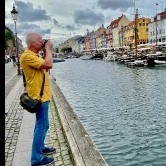Wildlife, long lenses, and sensor format
-
Recently Browsing 0 members
- No registered users viewing this page.
-
Similar Content
-
- 159 replies
- 23,084 views
-
- 3 replies
- 182 views
-
- 3 replies
- 469 views
-
- 68 replies
- 4,325 views
-
- 1 reply
- 123 views
-






Recommended Posts
Join the conversation
You can post now and register later. If you have an account, sign in now to post with your account.
Note: Your post will require moderator approval before it will be visible.